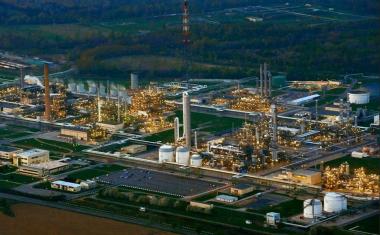Lanxess CEO Unveils First Details of Realignment
CEO Matthias Zachert, who took over from Axel Heitmann as CEO of German specialty chemicals producer Lanxess on April 1, is wasting no time in realigning operations and portfolio to eliminate weaknesses that led the company to post a net loss for 2013.
In presenting figures for this year's second quarter, Zachert also revealed preliminary details of the "Let's Lanxess Again" strategy outlined in brief in May and announced the resignation of Werner Breuers, who had management board responsibility for the sagging Performance Polymers segment as well as Advanced Intermediates.
Although Zachert said Breuers had asked to leave the company when his contract expires at the end of May next year, he said he will leave the managing board immediately and act in an advisory capacity for the remainder of his contract. The CEO personally will take over responsibility for the two segments until a successor is named, within the next 12 months.
Lanxess' three-phase corporate realignment scheme will begin reshaping the company's appearance with effect from January 1, 2015, Along with streamlining administrative functions it foresees regrouping several rubber businesses to take account of what Zachert said are overlapping customer and regional structures, both in established and emerging markets.
In future, the butyl rubber and performance butadiene business units will be part of a newly minted Tire & Specialty Rubbers unit, to be headed by Jorge Nogueira. The high performance elastomers and Keltan elastomers business units will become part of a new High Performance Elastomers unit headed by Jan Paul de Vries.
While Zachert has not ruled out a sale of the specialty chemicals product line of the rubber chemicals business - for which the company officially is seeking "strategic options" - for the present these activities will be combined with the
functional chemicals business unit and Rhein Chemie into a new Rhein Chemie Additives (ADD) business unit to be headed by Anno Borkowsky, current chief executive of the Mannheim, Germany-based subsidiary.
As part of the drive to create a leaner organizational structure, Lanxess is reducing the number of business units from 14 to 10 and combining group functions. At the same time, an operational excellence initiative will be at work examining all production facilities with respect to market requirements and synergy potential, while a marketing and sales excellence initiative evaluates the effectiveness and efficiency of the company's international distribution network.
Some of the 1,400 measures contained in the realignment scheme are aimed at cost cutting and may go hand in hand with job losses. Zachert said he had agreed with employee representatives not to discuss details. However, the CEO noted as he did earlier that any headcount reduction would largely take place in rubber operations outside the company's home market.
Highlighting Lanxess' Q2 2014 performance and the outlook for the full year, Zachert said the company has narrowed its original earnings guidance for EBITDA pre-exceptionals to €780-820 million.
In the second quarter, the competitive situation for synthetic rubber was "persistently difficult," the chief executive said. Across all functions, sales fell by nearly 6% to €2 billion, due to lower selling prices and unfavourable foreign exchange rates. EBITDA pre-exceptionals soared by 20.7% to €239 million, reflecting higher volumes, better capacity utilisation and cost savings from the efficiency scheme launched in September 2013.
Despite the improvement, Zachert said "the continuing low earnings level and increasing competition show the need for further action to improve competitiveness."
















